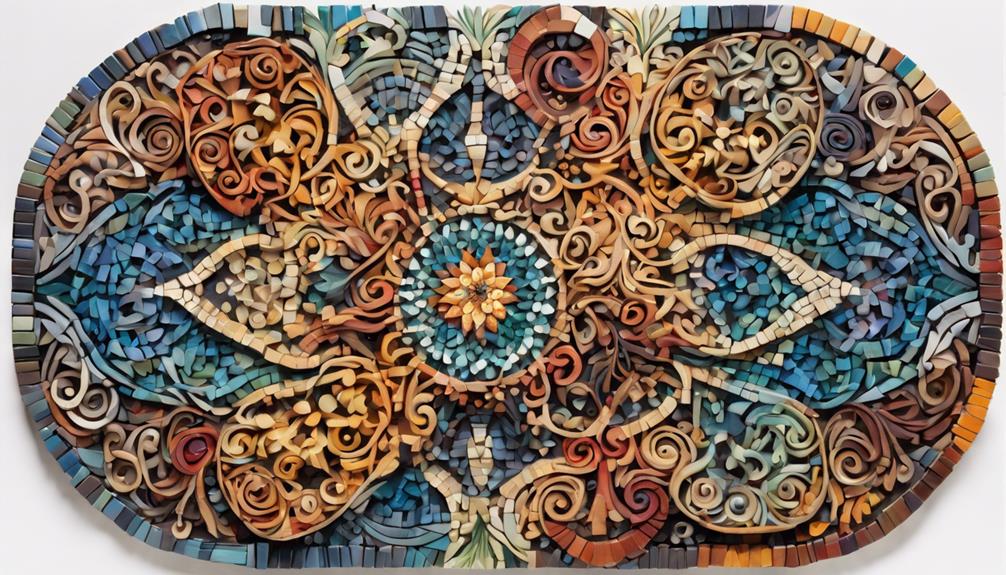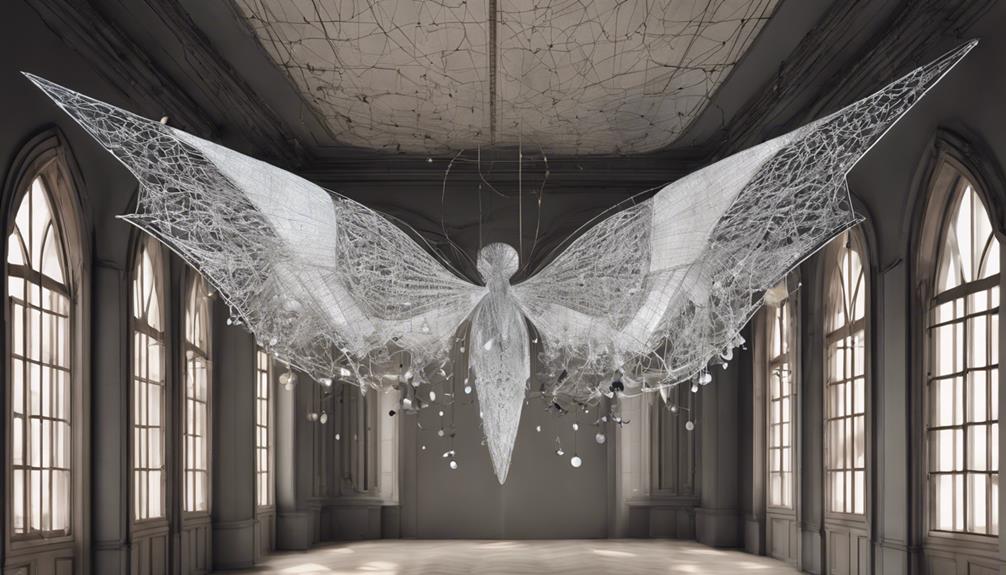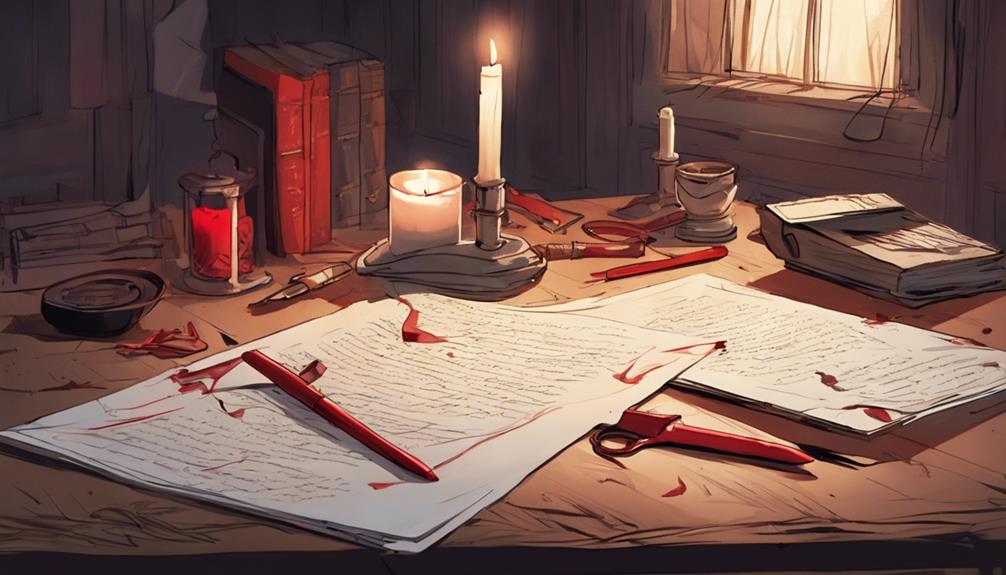As you set off on this villanelle workshop, you'll uncover the intricate dance of repetition, musicality, and depth that defines this poetic form. You'll learn to craft a memorable refrain, the emotional epicenter of your poem, by focusing on concise, evocative words and sonic echoes. You'll explore ways to build a unifying theme, weaving threads of meaning into a cohesive work of art. Strategic repetition will amplify emotional impact, and you'll balance structure with creative freedom to nurture a unique voice. As you navigate the challenging yet engaging world of villanelle, you'll uncover the secrets to creating a captivating narrative that will leave readers entranced.
Understanding the Villanelle Structure

As you explore the world of villanelles, you'll find that this poetic form's structure is characterized by a distinctive pattern of repetition, where the poem's refrain, typically a phrase or line, is repeated throughout the poem in a specific pattern. This repetition creates a sense of musicality, adding depth and complexity to the poem's themes. The villanelle's origins can be traced back to 16th-century France, where it emerged as a popular folk song form. Over time, poets adapted this structure to create a unique and challenging poetic form.
The villanelle's poetic constraints, such as the repetition of the refrain and the specific pattern of repetition, force poets to be creative and innovative in their use of language and imagery. This, in turn, allows poets to explore complex themes and ideas in a condensed and powerful way. By understanding the villanelle's structure, you'll be better equipped to harness its unique power and create poems that resonate with readers. As you investigate further into the world of villanelles, you'll find that the constraints of this poetic form can actually be a catalyst for creativity and innovation.
Crafting a Memorable Refrain

You'll often find that a villanelle's refrain serves as the poem's emotional epicenter, and crafting a memorable one can mean the difference between a poem that resonates and one that falls flat. A refrain that lingers in the reader's mind can elevate the entire poem, creating a sense of continuity and cohesion. To achieve this, focus on crafting a refrain that's both concise and evocative. Pay attention to the sonic echoes of your words, as the repetition of sounds and rhythms can create a hypnotic effect. Aim to distill the essence of your poem into a few, well-chosen words that reverberate with emotional resonance. A refrain that's too verbose or cryptic can fall flat, so aim for clarity and precision. Remember, the refrain is the heartbeat of your villanelle, pulsing with emotional intensity. By crafting a refrain that resonates, you'll create a poem that lingers in the reader's mind long after they've finished reading.
Building a Unifying Theme

With a refrain that resonates, you're poised to craft a unifying theme that weaves together the threads of your villanelle, creating a rich tapestry of meaning that underscores the poem's emotional core. This is where theme exploration becomes important, as you dig deeper into the underlying ideas and emotions that drive your poem. A unifying theme is what transforms your villanelle from a series of disparate thoughts into a cohesive, impactful work of art.
As you explore your theme, consider how it relates to your refrain. How does the refrain reinforce or challenge the theme? How do the emotions evoked by the refrain resonate with the emotions evoked by the theme? By carefully examining these relationships, you can create a sense of emotional resonance that draws the reader in and refuses to let go. Remember, a villanelle is not just a clever exercise in form; it's an opportunity to craft a powerful, emotional experience that lingers long after the final line. By building a unifying theme, you can create a poem that resonates deeply with your reader.
Using Repetition for Emphasis

Through the strategic deployment of repetition, you can amplify the emotional impact of your villanelle, imbuing specific words or phrases with a sense of urgency or importance that resonates throughout the poem. By repeating certain lines or phrases, you can create a sonic resonance that echoes through the poem, drawing the reader's attention to key themes or ideas. This repetition can also foster emotional resonance, as the repeated phrases take on a sense of familiarity and intimacy, evoking a deeper emotional response from the reader. As you craft your villanelle, consider the strategic placement of repetition to emphasize key themes or ideas. Ask yourself: what words or phrases do I want to resonate with the reader? Where can I repeat these phrases to maximum effect? By doing so, you can harness the power of repetition to create a rich, layered poem that resonates with readers on multiple levels.
Balancing Structure and Creativity

Having meticulously crafted the repetition of phrases to amplify the emotional impact of your villanelle, now it's time to contemplate how to balance the strict structure of the form with the creative freedom necessary to explore your themes and ideas. You've carefully constructed the refrain, but you still need to make certain that your poem doesn't feel stifled by its own rigidity. This is where poetic license comes in – the subtle deviations from the form that allow you to inject your unique voice and perspective.
As you navigate the intricate dance of repetition and variation, remember that creative freedom is not about abandoning the structure, but about using it as a springboard for innovation. It's a delicate balance, to be sure, but one that's essential for crafting a villanelle that's both technically sound and emotionally resonant. By embracing the tension between structure and creativity, you can create a poem that's both a masterclass in form and a deeply personal exploration of your chosen theme.
Editing for Cohesion and Flow

As you refine your villanelle, you'll need to scrutinize each line, ensuring that the carefully crafted refrains, tercets, and couplets cohere into a seamless narrative that flows effortlessly, transporting the reader through the emotional landscape you've created. To achieve this cohesion, you'll need to examine your poem's sentence structure and reading habits. Ask yourself: do the lines flow logically, or are there abrupt shifts that disrupt the narrative? Make sentence revisions to maintain a smooth, uninterrupted pace. Consider breaking up long sentences or combining shorter ones to create a sense of rhythm. Pay attention to the way your refrains are woven throughout the poem, ensuring they're not repetitive or contrived. By refining your villanelle's flow, you'll create an engrossing narrative that draws the reader in, inviting them to immerse themselves in your carefully crafted world.
Frequently Asked Questions
Can Villanelles Be Written in Different Languages or Cultures?
As you delve into writing villanelles, you may ponder if this form can transcend linguistic and cultural boundaries. The answer is affirmative, but with caveats. Cultural nuances and linguistic barriers can greatly impact the translation and reception of your work. You'll need to ponder how refrains and themes resonate across cultures, and how linguistic complexities may alter the poem's essence.
Are Villanelles Only Suitable for Expressing Melancholic Emotions?
You're exploring the surface of a rich question: are villanelles only suitable for expressing melancholic emotions? When you immerse yourself in the world of villanelles, you'll find that, indeed, they often convey a melancholy beauty, with refrains that echo like whispers in the darkness. This is because the form's inherent emotional intensity can create a sense of haunting longing, making it a natural fit for exploring the complexities of sorrow.
Can I Use Slant Rhymes or Near-Rhymes in a Villanelle?
As you explore the villanelle's strict rhyme scheme, you wonder if slant rhymes or near-rhymes can be used to inject flexibility into this traditional form. Fortunately, poetic license allows for some rhyme flexibility, granting you the freedom to experiment with near-misses that still evoke a sense of musicality. By embracing this flexibility, you can create a unique sonic landscape that honors the villanelle's spirit while pushing its boundaries.
How Do I Avoid Sounding Repetitive in a Villanelle?
As you navigate the villanelle's repetitive structure, you're right to worry about sounding monotonous. To avoid this, you'll need to inject variety in language and fresh perspectives throughout the poem. Employ synonyms, antonyms, and clever wordplay to create subtle shifts in meaning. Experiment with sentence structure, mixing short and long sentences to create a sense of rhythm. By doing so, you'll craft a rich tapestry of sound and sense, keeping your readers engaged.
Can a Villanelle Have More Than 19 Lines or Fewer Than 19 Lines?
As you explore the villanelle's structural constraints, you'll find that traditional forms do offer flexibility. While 19 lines are typical, there's no hard rule prohibiting fewer or more lines. You're free to experiment, but be mindful of the refrains' repetition and the poem's overall cohesion. By bending the traditional form, you're not breaking the rules, but rather, redefining the villanelle's boundaries to suit your unique voice and message.


